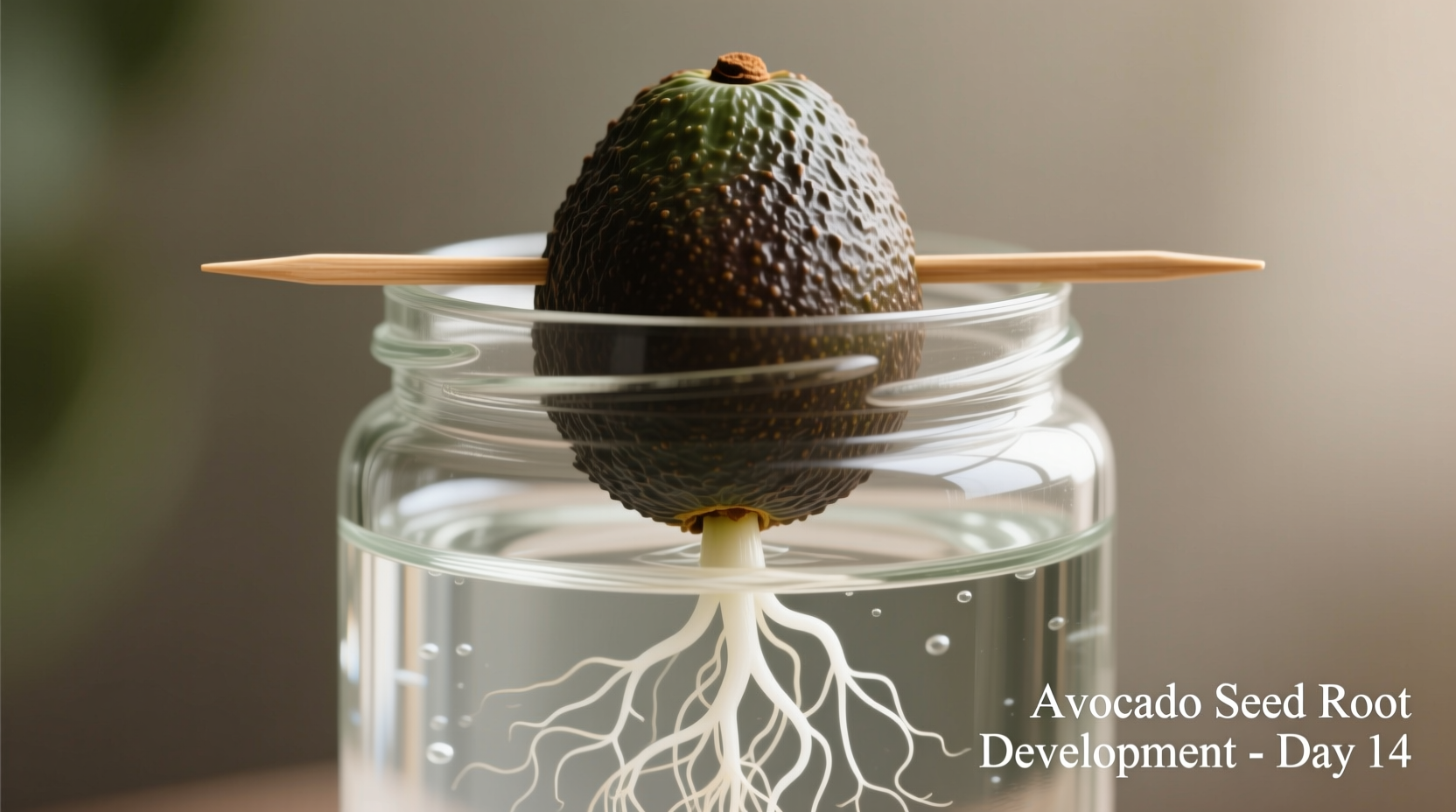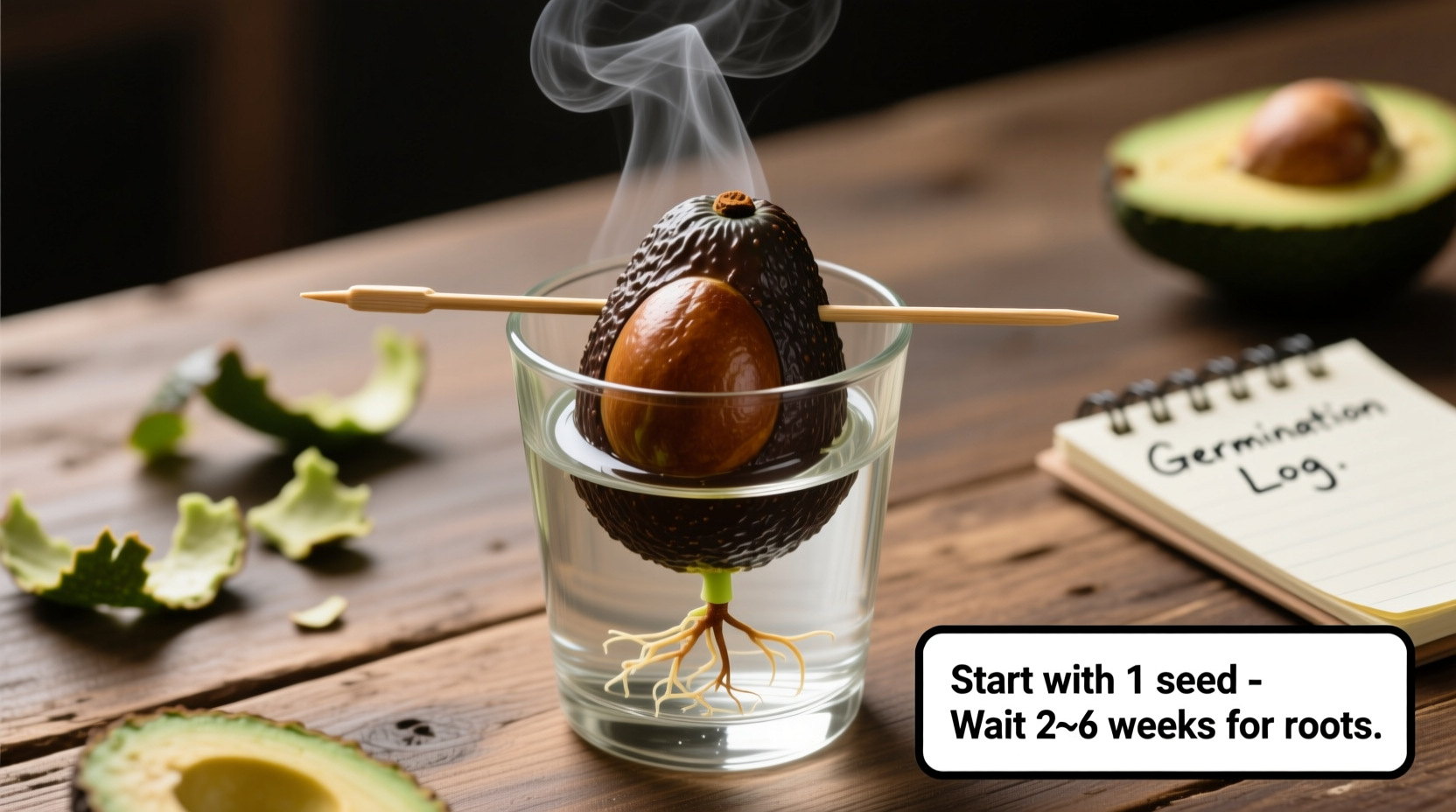Watching an avocado seed transform from a kitchen scrap to a vibrant sprout is one of gardening's most rewarding experiences. This complete guide reveals the exact process that home gardeners use to successfully germinate avocado seeds with minimal effort and maximum results. You'll learn professional techniques that eliminate common failures like mold growth, stalled sprouting, and weak seedlings - transforming your avocado pit into a thriving plant in as little as one week.
What You'll Need for Successful Avocado Seed Germination
Before starting, gather these essential supplies. Each item serves a specific purpose in creating the ideal germination environment:
- Avocado seed - Freshly removed from ripe fruit (Hass variety works best)
- Clear glass or jar - 8-12 oz capacity for water method monitoring
- Toothpicks - 3-4 for suspending seed (bamboo preferred)
- Filtered water - Chlorine-free maintains optimal pH
- Warm location - Consistent 65-75°F (18-24°C) temperature
- Patience - Most seeds sprout within 2-6 weeks
Step-by-Step Avocado Seed Germination Process
Preparing Your Avocado Seed
Carefully remove the seed from a ripe avocado without damaging it. Gently wash off all fruit residue using lukewarm water - avoid soap which can inhibit germination. Identify the seed's orientation: the broader, flatter end is the bottom (where roots emerge), while the tapered point is the top (where the stem grows). This distinction is critical for proper placement.
Water Method: Most Reliable Technique
The water method provides visible progress tracking and optimal moisture control. Insert three toothpicks at 120-degree angles about halfway up the seed's sides. Suspend the seed broad-end down in a glass filled with enough filtered water to cover the bottom third. Place in indirect sunlight at room temperature.
| Germination Stage | Timeline | What to Expect |
|---|---|---|
| Initial soaking | Days 1-7 | Outer shell cracks, small root emerges |
| Root development | Days 7-21 | Root grows 2-3 inches, secondary roots form |
| Stem emergence | Days 21-40 | Green stem appears, grows 6+ inches |
| Ready for transplant | Day 40+ | Stem has 2-3 sets of leaves, root system established |
This timeline comes from University of California Agriculture and Natural Resources, which has tracked avocado propagation for over 30 years. Their research confirms that maintaining consistent water levels covering just the seed's base prevents rot while encouraging root growth.
Alternative Methods Compared
While the water method works best for most home growers, these alternatives serve specific situations:
- Soil method - Plant seed directly in moist potting mix (broad-end down, half exposed). Best for gardeners who want fewer transplant shocks but has lower visibility for monitoring progress.
- Bag method - Wrap seed in damp paper towel inside plastic bag. Creates ideal humidity but requires careful moisture monitoring to prevent mold.

Troubleshooting Common Problems
Even with proper technique, issues can arise. Here's how to fix them:
- Mold on seed - Gently scrub with soft brush, change water immediately, add 1 drop of hydrogen peroxide per cup of water
- No sprouting after 6 weeks - Seed may be too old or from treated fruit; try a fresh seed from organic avocado
- Weak, spindly growth - Increase light exposure gradually; avoid direct hot sunlight
- Roots turning brown - Change water more frequently; ensure water isn't too cold
According to Texas A&M AgriLife Extension, avocado seeds from grocery store fruits have an 85-95% germination success rate when proper moisture and temperature conditions are maintained. Their studies show that organic avocados generally produce more viable seeds than conventionally grown varieties due to fewer chemical treatments.
Transplanting Your Sprouted Avocado
Move your seedling to soil when the stem reaches 6-7 inches and has developed 2-3 sets of leaves. Use a 10-inch pot with drainage holes filled with well-draining potting mix. Plant with the top half of the seed still exposed. Water thoroughly and place in bright, indirect light. Maintain consistent moisture for the first month as the plant establishes itself in its new environment.
During this critical transition phase, avoid direct afternoon sun which can scorch tender leaves. Gradually increase light exposure over 2-3 weeks. Your avocado plant will typically grow 12-24 inches in its first year with proper care, developing the characteristic glossy leaves that make it such a popular houseplant.
Long-Term Avocado Plant Care
Once established, your avocado plant needs:
- Bright, indirect light (3-4 hours of morning sun ideal)
- Water when top inch of soil feels dry
- Monthly balanced fertilizer during growing season
- Pruning to encourage bushy growth when 12 inches tall
Remember that while your home-grown avocado may eventually produce fruit (typically after 5-13 years), most indoor plants never reach fruiting maturity. Focus on enjoying your living plant as a beautiful, air-purifying addition to your home. The satisfaction of growing a tree from a simple kitchen scrap provides ongoing joy regardless of fruit production.











 浙公网安备
33010002000092号
浙公网安备
33010002000092号 浙B2-20120091-4
浙B2-20120091-4